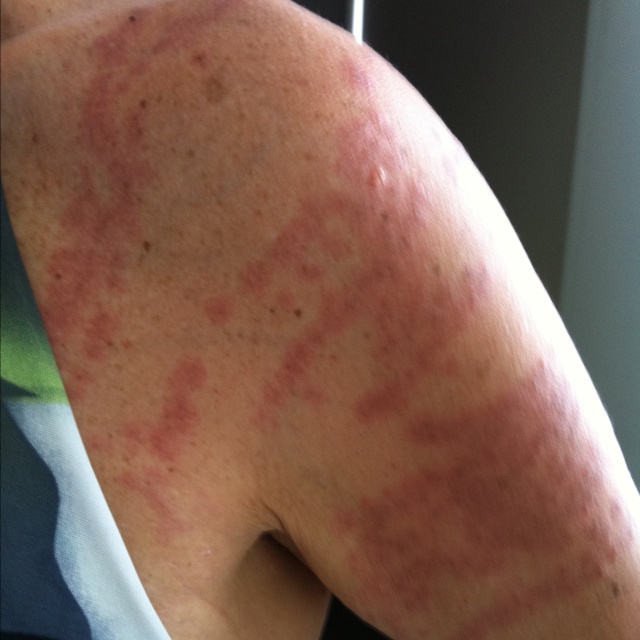
Sylvie is a 20-year-old university exchange student from Europe. She is concerned she has been stung by a box jellyfish.
She presents 12 hours after being stung swimming off a beach on the NSW south coast.
She reports initial intense burning pain affecting both forearms and lower legs.
She saw a long tentacle adherent to her right elbow, which she washed off in a nearby public shower.
The pain lasted about two hours. She has since developed pruritic, hot, linear wheals (pictured). She is systemically well.
What is the most likely diagnosis?
Correct!
Most Australian jellyfish stings present with an immediately painful, linear rash.
Irukandji-like stings cause severe generalised pain and systemic symptoms 20-30 minutes after exposure.
Major box jellyfish (Chironex fleckeri) and Irukandji-like stings (most commonly due to Carukia barnesi) occur predominantly in tropical waters.
Bluebottles (Physalia sp.) are found in oceans worldwide and are the most common cause of jellyfish stings globally. Sea bather’s eruption is a pruritic rash that affects skin covered by a bathing suit, rather than exposed areas.
Initial first aid for all jellyfish stings includes careful removal of adherent tentacles, by washing with seawater (not fresh water). For bluebottle stings, it is recommended to immerse the site in hot water (45°C) for 20 minutes.
Where box jellyfish envenomation is suspected, vinegar application is appropriate first aid, in addition to resuscitation and transfer for cardiac monitoring if warranted.
The pain associated with bluebottle stings typically improves within hours and the local symptoms within 72 hours. Systemic symptoms, including nausea, vomiting, dyspnoea, abdominal pain and headache, occur in less than 2% of cases.
There have been rare reports of significant sequelae, including rhabdomyolysis with acute renal failure and occasional fatalities in the Northern Hemisphere.
For pruritic or uncomfortable local lesions consider topical steroids and oral antihistamines. For more significant local reactions, systemic corticosteroids may be of benefit.
